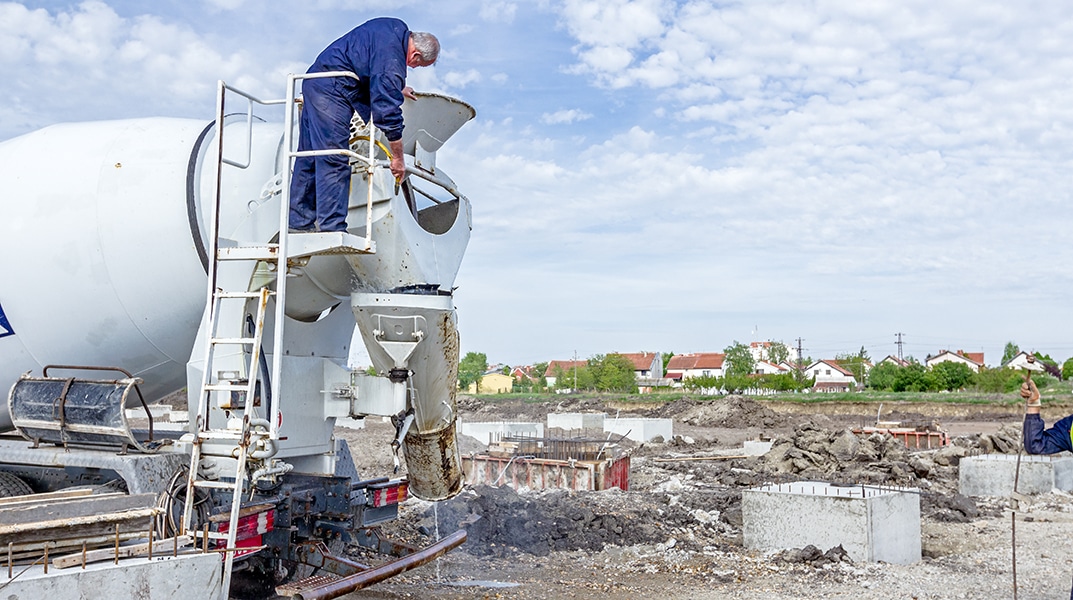Improper concrete disposal is a common but serious issue on construction sites. Many contractors aren’t sure how to dispose of concrete waste from trucks and mixers safely or in compliance with state and environmental regulations. Disposing of concrete slurry or leftover material in the wrong place not only creates safety risks on the jobsite but also contributes to environmental damage and exposes contractors to legal penalties. It’s not just about cleanup, it’s about responsibility.
Fortunately, there’s a safe and effective way forward: professional concrete washout services.In this blog by Tom Kraemer Inc., we’ll walk you through how to properly dispose of concrete washout from trucks and mixers, the risks associated with improper disposal methods, and why working with a certified provider is the smartest and safest solution.
Why Does Proper Concrete Waste Disposal Matter?
Properly managing concrete washout isn’t just about preventing problems. It’s about setting your project up for long-term success. When handled the right way, washout disposal supports sustainability, efficiency, and your professional reputation.
- It Supports Sustainable Construction: Environmentally responsible disposal keeps your project in line with green building standards like LEED. It also shows clients and communities that your team is committed to minimizing its environmental footprint.
- It Keeps the Job Moving Smoothly: Reliable washout systems reduce cleanup time, prevent workflow interruptions, and eliminate the need for ad hoc solutions that can slow progress. Your team can stay focused on the build rather than backtracking to fix preventable messes.
- It Enhances Your Professional Reputation: Using certified disposal services sends a clear message. Your company doesn’t cut corners. It builds trust with developers, inspectors, and clients. It may even help you win repeat business or qualify for public or environmentally regulated projects.
- It Simplifies Compliance and Documentation: Instead of scrambling during inspections, you’ll have a paper trail of service logs, permits, and washout procedures ready to go. This makes your job easier and your site more defensible when it’s time to prove compliance.
Best Practices: How to Dispose of Concrete
If you’re wondering how to dispose of concrete the right way, the answer starts with proper containment and compliance.A dedicated washout system is essential for managing slurry and residual concrete from trucks and mixers safely and legally. Follow these best practices to protect your crew, your project, and the environment:
- Use leak-proof washout containers to hold concrete slurry and residue without leaching into the soil or the surrounding area.
- Place containers away from drainage paths and stormwater systems to prevent runoff contamination and environmental violations.
- Maintain a consistent service schedule to avoid overflows, spills, or hardened waste buildup. .TKI offers dependable weekly washout service—just give us a call when your container is nearing capacity, and we’ll handle the removal and replacement quickly, so your jobsite stays safe, clean, and compliant.
- Prevent any soil or groundwater exposure by keeping all washout waste contained and secured throughout the duration of the project.
- Keep detailed documentation, including permits, signage, and service logs to ensure regulatory compliance.

The Risks of Improper Washout Disposal
When it comes to how to dispose of concrete waste, cutting corners can cost more than just time. While it might be tempting to handle disposal in-house, most contractors aren’t fully equipped or trained to manage the risks involved. Here’s why DIY isn’t the answer:
- Risk of costly mistakes: Improper containment or disposal of washout slurry can lead to fines, rework, or even environmental remediation orders.
- Regulatory failures: Makeshift washout pits or ad hoc solutions often fall short of Minnesota’s environmental compliance standards, putting your entire project at risk during inspections.
- Takes time away from your core work: Managing disposal distracts from the build and reduces productivity onsite.
- Insurance and liability issues: Improper handling may not be covered under your insurance policy, exposing you to unnecessary risk. In-house approaches may expose you personally to liability for any damages or violations.
- Crew safety concerns: Without proper containment and handling, washout can spill or harden into hazardous obstacles, increase slip or trip hazards, and create dangerous working conditions.
Partner with TKI for Concrete Disposal in Minnesota!
Understanding how to dispose of concrete waste safely and legally is essential for jobsite compliance and crew safety. Working with a professional service ensures the process is handled correctly, without uncertainty or added risk. Here’s why TKI is the right choice:
- TKI provides concrete washout containers that meet all environmental and legal standards in Minnesota.
- We help contractors avoid fines, pollution, and non-compliance violations.
- Our services are LEED-certified, supporting environmentally responsible building practices.
- We offer reliable delivery, placement, and pickup so your jobsite stays clean, safe, and efficient.
Ready to keep your jobsite compliant, your crew safe, and your project on track? Learn more about TKI’s concrete washout services today.

